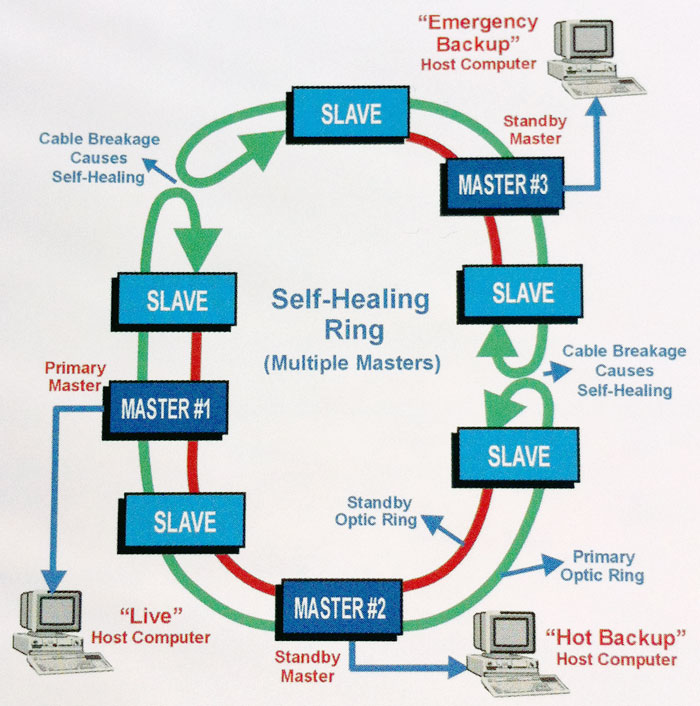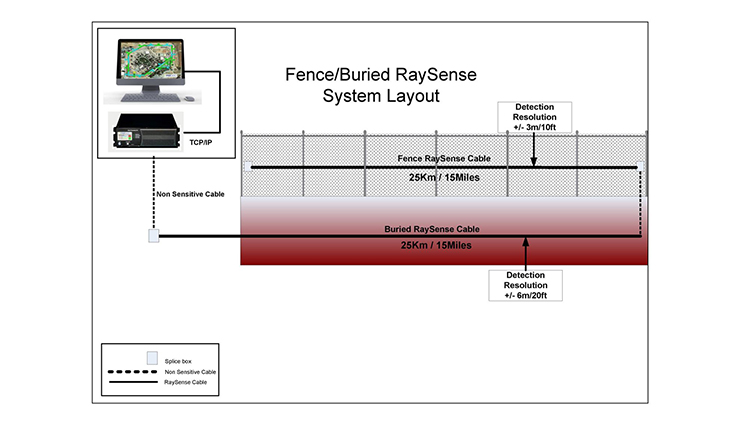The Evolution of Fiber Security System in Modern Security Installations
The Evolution of Fiber Security System in Modern Security Installations
Blog Article
Why Fiber Optic Safety Equipments Are the Future of Security
The change to fiber optic safety systems marks a considerable innovation in the realm of defense, driven by their exceptional data transmission abilities and durability to outside disturbances. These systems not just facilitate faster and more trusted communication yet additionally offer a cost-effective option with minimized upkeep requirements. As the landscape of safety develops along with arising modern technologies such as AI and IoT, the potential for fiber optics to improve and redefine security frameworks becomes significantly noticeable. The effects of these developments elevate critical questions about the future of security steps and their performance in an ever-changing setting.
Advantages of Fiber Optic Solutions
Among the main advantages of fiber optic systems is their premium bandwidth capacity, which promotes the transmission of big quantities of information over fars away without substantial loss. This characteristic is particularly beneficial for safety and security applications that call for the continual tracking and transfer of high-definition video feeds, sensor data, and other essential info. Optical fiber can accommodate the growing needs of modern security systems, guaranteeing that data stays intact and dependable.
Additionally, fiber optic cables are less prone to electromagnetic disturbance, which can be a considerable concern in environments with various electronic gadgets. This resistance improves the honesty of the information being transferred, therefore reducing the danger of information violations or system failings. Fiber optic systems are inherently much more protected than typical copper wires, as tapping into a fiber optic line without discovery is exceptionally tough.
The resilience of fiber optic cords also adds to their charm. They are resistant to environmental aspects such as moisture and temperature level variations, reducing upkeep expenses and boosting system durability. On the whole, these advantages placement fiber optic systems as a robust and effective selection for modern safety frameworks, ensuring reliable and protected information transmission.
Improved Data Transmission Rate

The ability to transfer vast quantities of data promptly helps with the seamless combination of high-definition video clip feeds and progressed analytics. Protection systems can currently refine and examine information in real-time, improving response times and situational understanding. Furthermore, fiber optic connections support longer transmission distances without deterioration of signal top quality, making them excellent for extensive protection networks.
The enhanced speed of fiber optic systems not only improves the performance of safety procedures but additionally minimizes latency. This is specifically crucial in vital situations where prompt decision-making can avoid safety violations or minimize possible hazards. As companies remain to focus on safety and efficiency, the need for fast and dependable data transmission will certainly strengthen fiber optic systems as a keystone of contemporary protection framework.
Resistance to Disturbance
Fiber optic protection systems regularly demonstrate extraordinary resistance to electromagnetic interference, a critical benefit in atmospheres vulnerable to digital sound. Unlike standard copper cords, which can be negatively impacted by electromagnetic fields, superhigh frequency interference, and other types of electrical disruption, fiber optic cables utilize light to transfer data. This inherent property guarantees that the signals remain clear and unaltered, regardless of bordering digital activity.
The usage of glass or plastic fibers in fiber optic innovation creates check here a barrier against interference, enabling trustworthy data transmission also in challenging circumstances such as commercial centers, urban areas with high digital website traffic, or areas near radio towers. This particular substantially minimizes the possibility of signal degradation or loss, making fiber optic systems especially suitable for protection applications where integrity and accuracy of data are paramount.
Furthermore, this resistance to disturbance improves the general efficiency and dependability of protection systems, guaranteeing that tracking and sharp systems work seamlessly. In a globe where safety and security is progressively threatened by sophisticated innovations, the resilience of fiber optic systems attracts attention as a critical feature, enhancing their status as a crucial element of modern-day protection framework.
Cost-Effectiveness With Time
Substantial price savings can be accomplished over time with the implementation of fiber optic security systems. While the preliminary investment may seem greater compared to traditional copper-based systems, the long-lasting financial benefits become evident with reduced operational and maintenance costs (fiber security). Fiber optic wires are inherently extra durable and less prone to environmental variables, which converts to decrease replacement and repair service expenditures over their lifespan
Moreover, fiber optic systems need much less power to run, which further reduces power prices. Improved information transmission capabilities permit less repeaters and amplifiers, reducing devices financial investment and streamlining setup processes. The scalability of these systems additionally adds to cost-effectiveness, as companies can increase their safety infrastructure without incurring substantial extra expenses.
Another variable to take into consideration is the boosted effectiveness in surveillance and response capacities that fiber optics provide. Enhanced real-time information transmission can result in quicker case action times, potentially mitigating losses and responsibilities connected with safety violations. In amount, the lasting benefits of fiber optic safety systems not just validate the first expenditure however likewise position them as an economically sensible selection for organizations looking for robust security options.

Future Innovations in Safety
Advancing here are the findings technologies are readied to change safety systems, incorporating artificial knowledge (AI) and equipment understanding to improve hazard discovery and action capabilities. These advancements will permit safety systems to analyze vast amounts of data in real-time, recognizing patterns and abnormalities that indicate prospective hazards. This aggressive approach will enable much faster decision-making and a lot more reliable event responses.
Additionally, the incorporation of the Internet of Points (IoT) is paving the means for interconnected security devices, supplying detailed monitoring and monitoring. Smart sensors can communicate details regarding environmental changes, while automated signals can inform security personnel immediately of questionable tasks.
Moreover, the development of biometric technologies will better bolster protection mechanisms. Face recognition, finger print scanning, and retina identification are becoming more advanced, providing layers of verification that are hard to bypass.
Conclusion
Finally, fiber optic safety and security systems click this stand for a considerable improvement in defense modern technology, providing unparalleled information transmission rate, resistance to electromagnetic interference, and long-lasting cost-effectiveness. As the need for advanced security solutions proceeds to expand, the assimilation of optical fiber with emerging modern technologies such as AI, IoT, and biometrics will better improve safety and security frameworks (fiber security). The combination of these technologies will certainly ensure a more protected and receptive environment, strengthening optical fiber as a foundation of future security systems
Report this page